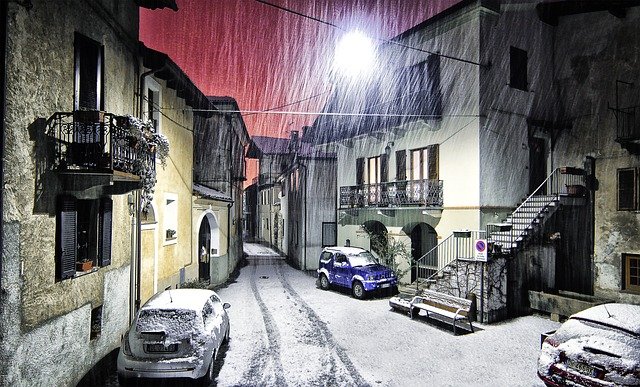When the snow starts falling, it’s tempting to retreat into the house and hibernate until spring. But no matter how tempting, it is unfortunately not possible. Even if we didn’t have to go to work, regulations in most communities hold individuals responsible for clearing the sidewalks in front of their homes.
There is a lot of conflicting advice about the best way to clear a sidewalk, and most of it doesn’t consider environmental impacts. But we do.
Know Your Conditions
The best way to clear snow depends on what kind of snow you have. You may only need a shovel for clearing dry, powdery snow, or you may need de-icer even if your snow doesn’t stick. Take snow advice with a grain of salt. Or avoid the salt because it can pollute your local water supply — but always do consider your own snow conditions.

Safety First
Avoiding chemicals is usually the safest choice. Don’t use de-icer if simply shoveling snow will work. If you don’t get snow often, you can cover the sidewalk with a tarp when snow is expected. After the snow stops, lift the tarp for a clear pathway.
If shoveling is necessary, learn how to do it safely without injury. Lifestyle hackers sometimes recommend shop vacs or leaf blowers instead of shovels for snow removal. Unless you are physically unable to shovel snow (and cannot find someone who can do it for you) it’s best to avoid polluting machinery.
If you must use de-icer, use the smallest effective amount and only apply it where necessary. That said, for areas like driveways and sidewalks that you do clear, do the job right. Clearing a path only as wide as a snow shovel does not benefit wheelchair users, people with mobility issues, or adults holding a child’s hand or pushing a stroller. Provide a wider path and clear curb cuts to keep your sidewalk safe for everyone.
Traction
Before reaching for de-icer, consider materials like sandbox sand or kitty litter that won’t melt ice but can provide traction. Fireplace ash is another choice; depending on your soil type, this could be beneficial to your plants. Alfalfa meal is another material that may serve as a fertilizer while also providing traction.
De-icer
A popular and relatively safe DIY de-icer uses dish soap and rubbing alcohol diluted in water.
If you must use a commercial de-icer, magnesium chloride and calcium chloride are slightly less harmful to plants (and work at much lower temps) than rock salt (sodium chloride). Urea can work as a de-icer, too. Used sparingly, urea can be beneficial as a fertilizer. But it can also lead to eutrophication in downstream waters and burn plants at higher concentrations.
The EPA maintains a list of de-icers that meet their Safer Choice Standards. These Safer Choice standards do not guarantee absolute safety to humans, pets, and the environment. But they do exclude the most harmful ingredients while assuring comparable product performance.
Be the Good Neighbor!
Elderly or physically limited neighbors can’t apply your new de-icing knowledge without risking injury. About 100 Americans die shoveling snow every year. If you can make the time, offer to help clear a neighbor’s sidewalk to help prevent falls or worse. It’s a great way to establish a new relationship and make your community a better place.
Originally published on January 9, 2020, this article was republished in January 2021 with updated links.
The post Eco-Friendly Ways To De-Ice Your Sidewalk appeared first on Earth 911.








